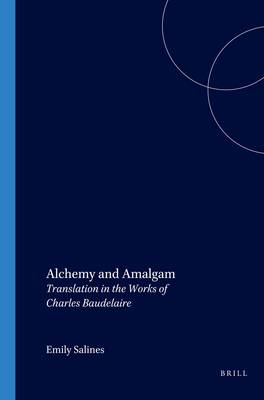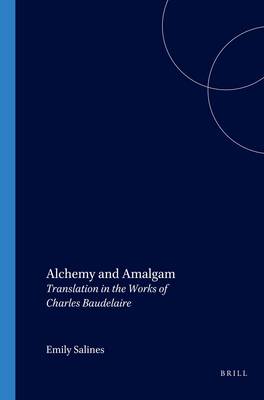
- Afhalen na 1 uur in een winkel met voorraad
- Gratis thuislevering in België vanaf € 30
- Ruim aanbod met 7 miljoen producten
- Afhalen na 1 uur in een winkel met voorraad
- Gratis thuislevering in België vanaf € 30
- Ruim aanbod met 7 miljoen producten
Zoeken
€ 66,08
+ 132 punten
Omschrijving
Alchemy and Amalgam explores a relatively un-researched area of the Baudelairean corpus (his translations from English) and relates them to the rest of his works. It seeks to establish a link between translational and creative writing, arguing for a reassessment of the place of translation in Baudelaire's writing method. Rather than a sideline in Baudelaire's creative activities, translation is thus shown to be a central form of dual writing at the core of his works. Baudelaire's translations from English, his constant rewriting of pre-existing material (including his own), the doublets, the transpositions d'art, and the art criticism are all based on an approach to writing which is essentially derivative but also transformative. Thus the Baudelairean experiment illustrates the limits of romantic notions of originality, creativity and genius, reminding us that all writing is intrinsically intertextual. It also shows the complexity of translation as a form of creation at the core of modern writing.
The book is one of the first of its kind to link the study the translational activity of a major writer to his 'creative' writings. It is also one of the first to provide an integrated presentation of French 19th-century translation approaches and to link them to questions of copyright and authorship in the context of the rise of capitalism and romantic views of creation and genius. It offers, therefore, a new perspective both on translation history and on literary history.
Alchemy and Amalgam will be of interest to students of translation, comparative literature and French studies.
The book is one of the first of its kind to link the study the translational activity of a major writer to his 'creative' writings. It is also one of the first to provide an integrated presentation of French 19th-century translation approaches and to link them to questions of copyright and authorship in the context of the rise of capitalism and romantic views of creation and genius. It offers, therefore, a new perspective both on translation history and on literary history.
Alchemy and Amalgam will be of interest to students of translation, comparative literature and French studies.
Specificaties
Betrokkenen
- Auteur(s):
- Uitgeverij:
Inhoud
- Aantal bladzijden:
- 304
- Taal:
- Engels
- Reeks:
- Reeksnummer:
- nr. 246
Eigenschappen
- Productcode (EAN):
- 9789042019317
- Verschijningsdatum:
- 1/01/2004
- Uitvoering:
- Paperback
- Formaat:
- Trade paperback (VS)
- Afmetingen:
- 150 mm x 220 mm
- Gewicht:
- 512 g

Alleen bij Standaard Boekhandel
+ 132 punten op je klantenkaart van Standaard Boekhandel
Beoordelingen
We publiceren alleen reviews die voldoen aan de voorwaarden voor reviews. Bekijk onze voorwaarden voor reviews.











